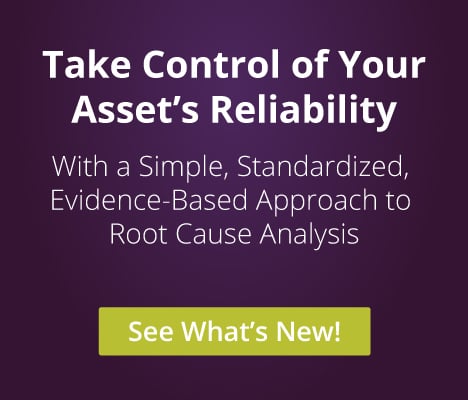Outsourcing | Effective Vendor Management Strategies
From Vendor Selection to Performance
Here the six specific areas managers can improve their chances of success
Managing contracted maintenance activities effectively and efficiently has always been a struggle for maintenance and engineering managers.
The number one reason for outsourcing maintenance is to cut costs, according to a recent survey of managers. But let’s be crystal clear here: outsourcing maintenance does not save money.
What managers are trying to achieve with contracting maintenance is evaluating service vendors to strike a balance between costs and service that optimize operations. When successful, managers can reduce maintenance expenses by employing a contractor with more expertise and skills than in-house resources can provide.
How can managers streamline the vendor evaluation process in order to reap returns from the decision to outsource? One important early step is to establish a baseline of true maintenance costs. Managers will not succeed unless they understand their departments’ true maintenance costs.
By focusing on these six specific areas, managers can improve their chances of success.
1. Scope of Services
In order to successfully identify and clearly define the requirements, specifications, objectives, expectations, and constraints of the service to be provided, managers can focus on the following factors related to the scope of service:
Inputs. Appropriate inputs are crucial to the scoping process. They include:
- Services to include and exclude
- Departmental maintenance policies
- Strategic maintenance plan
- Condition assessment and other processes that require careful consideration so contractors can provide the full scope of services required
Efficiency. The evaluation process must ensure coordination with other maintenance tasks, as well as other departments and regions.
Specifications. This outcome of the scoping stage contributes to the service arrangement used for procurement in order to perform condition assessments and other inspections or data collection that might be required.
Outcomes. One result of this process is a service specification that is delivery focused, including performance requirements that enable a service provider to respond with an effective, efficient value proposition.
Support. Contractors need to understand the necessary hours of support and emergency service the department will require.
Future. The process needs to identify long-term maintenance needs.
The service specification might be part of a service level agreement (SLA) or other suitable contract that complies with an organization’s policies. Managers should establish appropriate arrangements for service providers to access asset data and associated information required to enable the service provider to respond. The level of access granted also must comply with the organization’s policies.
2. How To Select the 'Right' Vendor
Traditionally, price has been the sole factor managers considered in selecting contractors, but basing the decision on lowest cost will cost more. There are dozens of tools and ways to help managers decide which service provider to use, but one proven strategy for vendor evaluation is best value procurement (BVP), which looks at factors that include qualifications, expertise, schedule, quality, and performance-based criteria.
Typically, managers assign a value to each factor, which also can include price, experience, expertise, and safety records. These values are tabulated for each potential supplier or contractor with one scoring the best.
In this context, the value of services becomes a comparison of benefits to costs. A manager selects a contractor by researching qualified providers using a well-defined scope of services. This allows the manager and the contracting authority to determine criteria that reflect qualitative, technical, and sustainable aspects of the tender submission; as well as price when reaching a final vendor decision.
The BVP approach is based on the conviction that minimizing or eliminating risks when allocated information is effectively used for a proper choice. This means the more information that is available and the better it is used, the better the future can be predicted and the fewer decisions or risks must be made.
The process of choosing the factors to guide procurement toward the best value has three stages:
Identifying the Scope of Services. This process as described above is completed by a cross-functional team, as well as stakeholders within the organization.
Choosing Factors. Managers who have done criticality analysis know a variety of factors can determine asset criticality, and the same concept applies here. What are the factors to consider for outsourcing maintenance activities? Common factors include cost, expertise, customer service, response time, quality and safety.
Assigning Values. When evaluating critical equipment not all factors carry the same weight. At this point the cross-functional team weighs each factor based on what the group feels is most critical or important, then cascading down. Doing so removes the emotional aspect of rating providers.
3. Type of Contract
The contract details the responsibilities the service provider will be held accountable for. Facility or procurement managers often review the activities of the contractor and its employees to ensure they adhere to the terms of the agreement. This might include inspecting the work or getting feedback from others in the organization about how the work is being done and how well the contractor interacts with company employees.
The key then is to have the type of contract in place to avoid conflicts and miscommunication. Contracts should focus on agreed-upon services, deliverables, and KPIs.
Lump-sum contracts are favored when both parties negotiate and accept a clear scope of services, schedules, deliverables, and performance measures.
Cost-plus contract represent a percentage of the labor and materials costs, which cover the ongoing costs of operations and the service providers profit margin.
Time and materials contracts are another option but are not recommended. One of the negatives with this type of contract is the unknown. The service provider could increase time and material costs without the knowledge of the contract holder or being held accountable for a budget.
Unit-pricing contracts, also referred to as hourly rate contracts, are a combination of reimbursable expenses plus fixed labor rates.
4. Risk Management
The specific approach to managing facility risks varies depending on the size and scope of the facilities. The most visible part of facility risk is the day-to-day operation. Managers outsourcing maintenance services need to review key areas of potential risk:
Data. Managers need to decide what system to use to capture work history data — the contractor’s maintenance management software or the software used in-house? Maintaining accurate records is one of the toughest facility management challenges, and it’s one of the most important aspects of ensuring that data is available when needed. Who is responsible for validating the information? If and when the contract with the service provider expires, which party owns the transactional history? If the contractor is using its software, managers need to create a system to audit the services and maintenance work done to ensure that everything is being properly maintained and the department can track services performed, materials used, and labor utilization, among other items.
Environmental. Assuring that the contractor is compliant with federal, state, and local environmental and safety laws. The department needs policies, procedures and audits in place to ensure compliance.
Equipment. Managing equipment to minimize risk involves three key considerations: operation, storage, and maintenance. Using specialized equipment can cause risk not only to the operator, but also those around. Contractors must provide documentation that equipment operators are trained and qualified to operate the equipment. Storage of the equipment, such as heavy equipment needs to be secure so no unauthorized operation can occur. The equipment also must be maintained. Typically, this duty is the responsibility of the contractor.
Liability. Insurance, specifically liability insurance, is critical to protect the organization and the contractor.
5. KPIs Determine Success with Vendors
Measuring vendor performance against KPIs is essential to outsourcing success. We’ve all heard the saying, “What gets measured gets done.” When it comes to vendor management, managers can use numerous KPIs to measure performance or service, from the cost of maintenance by internal or subcontractors to asset performance, asset reliability, quality and response time against SLAs. Among the KPIs managers should consider are these:
Customer Service Levels. The average response time measures the time between the moment a customer calls and when a technician responds to it. This KPI is crucial because response time is a common complaint among customers. Managers can use several KPIs, such as average response time, first call resolution, customer satisfaction, service level and complaints.
Backlog. This KPI measures maintenance tasks that are essential to repair or prevent equipment failures but that have not been completed yet, including preventive maintenance, predictive maintenance, corrective maintenance and inspections. Managers should measure backlogs in hours and convert the data to backlog weeks. A healthy total backlog is four-six weeks, and managers want two-four weeks of ready backlog.
Schedule Compliance. This KPI measures the ability to schedule and complete work for customers on the date or time as promised.
Quality. Managers can employ several KPIs to measure quality. Mean time between failures (MTBF) can help managers validate the quality of the repair, while mean time between maintenance (MTBM) measures the time between maintenance activities.
6. Conflict Resolution
Conflict is inevitable, but if managers do not address it properly, it can be bad for business, and it can negatively impact both parties involved. Managers need to resolve most conflicts in their earliest stages. Focusing on these issues can help managers avoid and resolve conflicts before they interfere with the relationship between the contractor and the department:
Communication. It is important to have a documented plan that establishes clear lines of communication covering the service provider working in the facility, the customer, and facility occupants.
Complaints. Establish a process for resolving issues and complaints immediately. Issues involving facility-managed arrangements typically require an immediate response rather than relying on periodic performance reviews.
Reviews. Managers should revisit performance KPIs regularly.
When a manager has a well-defined scope of service requirement in place, qualitative and quantitative methodology to assist in selecting the right provider, the most appropriate type of contract, key performance indicators, policy and procedures established for communication and conflict resolution, the result is more likely to be a cost-effective and beneficial relationship between the in-house department and the services vendor.
This content was originally published here
Topics: facilitiesnet, Work Management, Article, Leadership

Posted by
Nexus Global
Recognized globally, across various industries, for delivering sustainable solutions that optimize both the organization’s assets and processes to yield a ROI of 10:1 or greater. Nexus Global Business Solutions, Inc. has been a worldwide leader in asset performance management and maintenance consulting, coaching and training for 15+ years.



